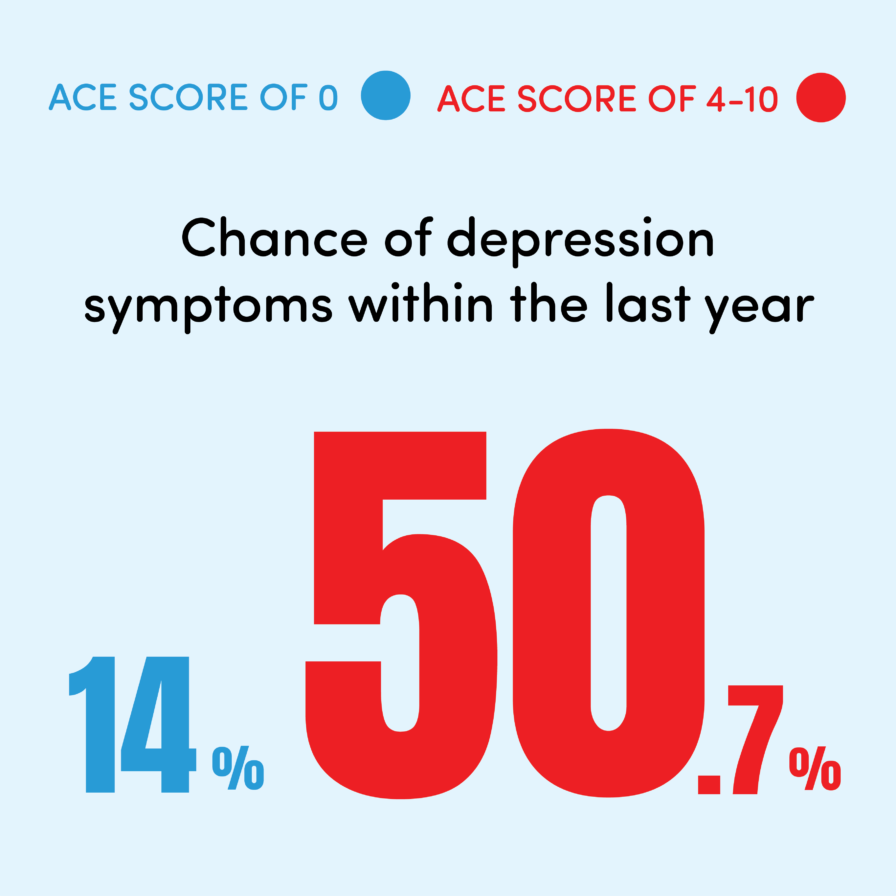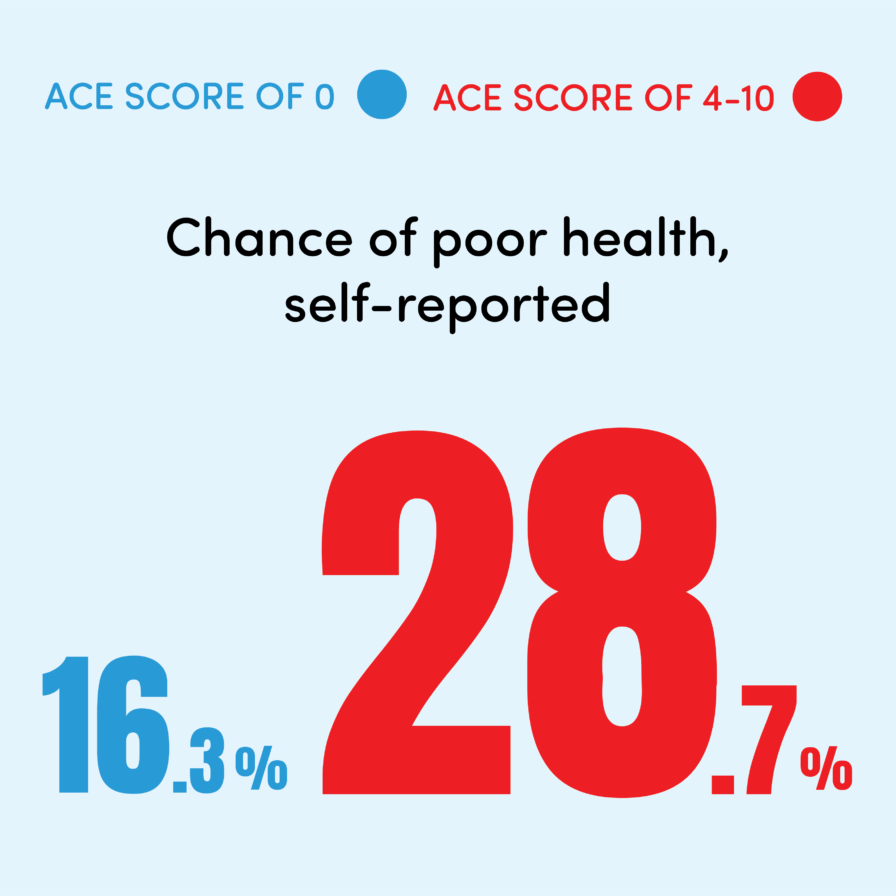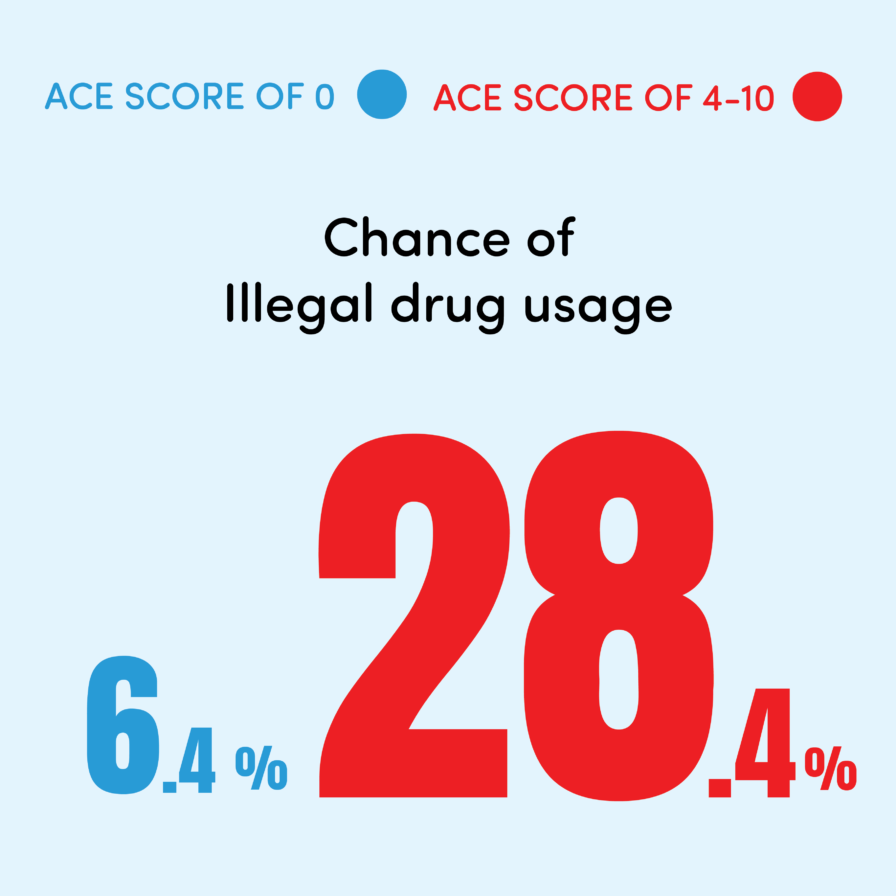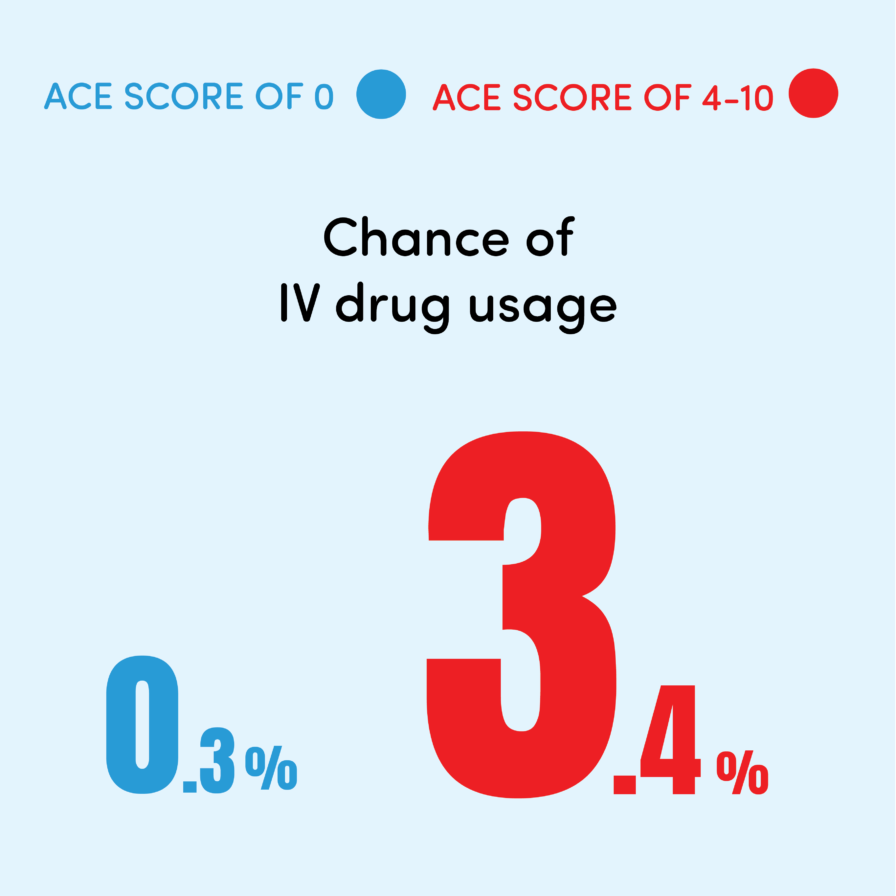Your ACE score is
6
Understand your health risks
What does my ACE score mean?
As your ACE score increases, the risk of disease and social and emotional problems increases. Think about your ACE score as measuring the amount of toxic stress you endured as a child and alerting yourself to some statistical indicators of health risks.
What do I do now?
This is one of the most common questions people have after taking their ACE test. Everyone’s journey to healing from ACEs is different, but we’d like to invite you to read material we have about healing from ACEs. We also have a newsletter where you can learn more about ways to heal from ACEs, as well as ways you can help to prevent child abuse.
How do ACEs impact health?
The higher your ACE score, the higher your chance of suffering from psychological and medical problems like chronic depression, cancer, or coronary heart disease. The chart below shows the consequences of an ACE score of 4 or higher. From this score, the likelihood of chronic pulmonary lung disease increases by 390%; hepatitis, 240%; depression, 460%; and attempted suicide, 1,220%.
How much do ACEs impact our health?
Our childhood experiences have a tremendous, lifelong impact on our health and the quality of our lives. The ACE study showed dramatic links between adverse childhood experiences and risky behavior, psychological issues, serious illness, and the leading cause of death. People with six or more ACEs die nearly twenty years earlier (on average) than those without ACEs.
Do lower ACE scores still impact our health ?
There are still some severe consequences of a lower score. A quarter of Americans have an ACE score of only one, and their chance of becoming an alcoholic doubled. An ACE score of two means four times the risk of alcoholism, and an ACE score of 3 may explain your chronic depression.
What can be done to prevent ACEs?
Wide-ranging health and social consequences underscore the importance of preventing ACEs. Strategies that address the need of children and their families include:
• Parent support programs for teens and teen pregnancy prevention programs
• Mental illness and substance abuse treatment
• High-quality child care
• Sufficient economic support for families with lower incomes
• Home visiting to pregnant women and families with newborns
• Parenting training programs
• Intimate partner violence prevention
• Family-friendly work
How do ACEs affect the economy?

The lifetime cost of non-fatal child mistreatment (which covers ONLY 5 of 10 ACEs) incurred annually in the United States is $401 billion. These costs include life expectancy cut short due to long term effects of abuse, special education, health care, child welfare, and criminal justice.



